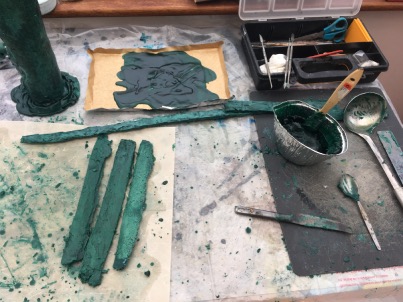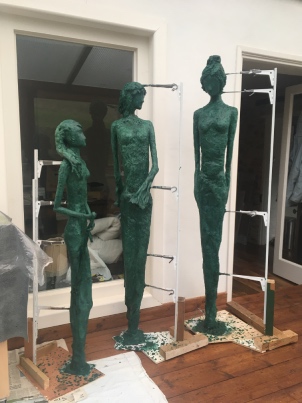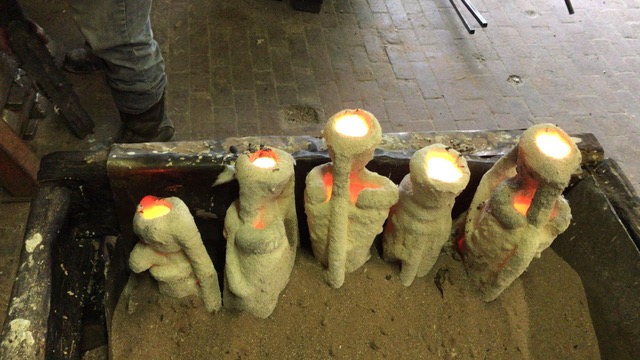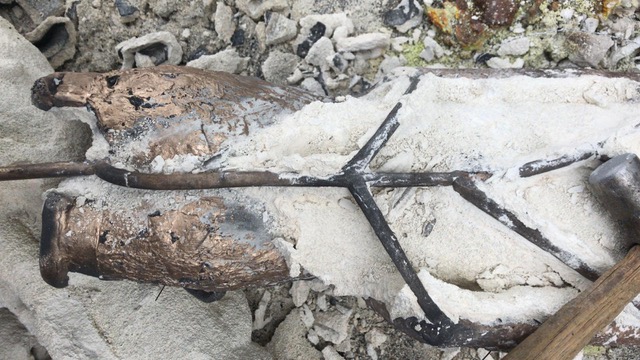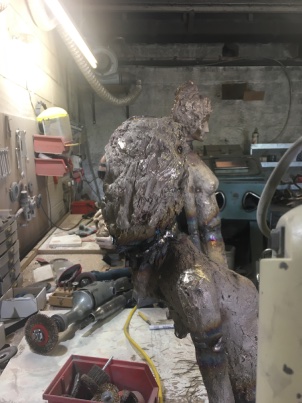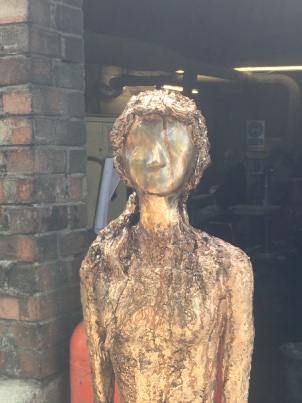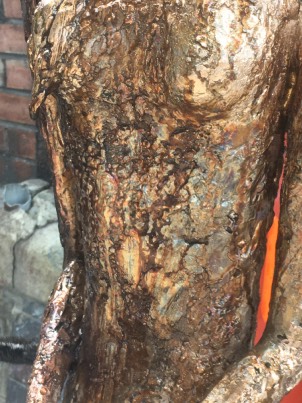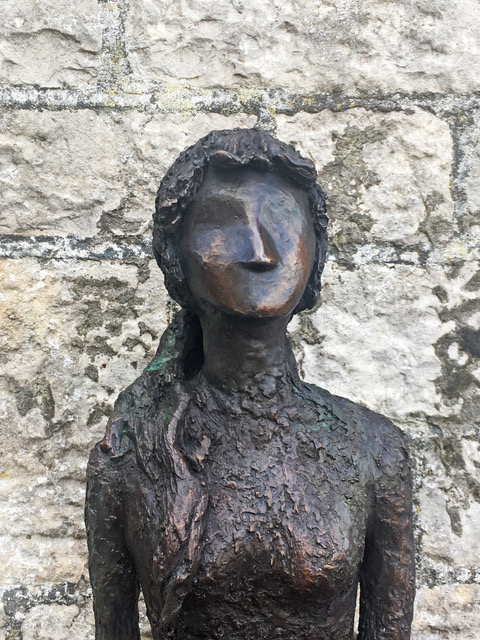Bronze is created from an alloy of copper (88%) and tin (12%) melted together an allowed to cool. Historically other metals were also added to the mix but today these are the generally accepted proportions that define bronze.
For the Lost Wax process the original sculpture is created in wax, either directly or via a mould. Depending on the size of the sculpture it will either be cast whole or cut up into sections to make the handling process easier. Wax tubes are added to the sculpture to allow the molten bronze to flow easily into and around the piece as is it being cast and to enable gasses to escape.
Once ready for casting a liquid ceramic coating is built up around the wax structure to create a shell about 1cm thick. This shell goes through a heating process to melt out the wax and leave a hollow space for the bronze to pour into. The bronze is melted in a crucible at a temperature of over 1700 degrees centigrade and quickly poured into the shell.
The process of freeing the bronze from its shell and removing the added wax tubes needs to be carried out before the finishing process can start. If the sculpture has been cut up for casting each section must be welded back together. The surface needs to be restored to the original texture so will be worked on with grinders and metalworking tools so that and damage is removed.
In its natural state after finishing the bronze has quite a bright surface and most sculptures go through a patination process rather than leaving them to age naturally. A combination of pigments, chemicals and application methods can be used to create a wide range of colours and finishes to the final sculpture.
The Foundry who cast these sculptures for me are – Art of a Fine Nature in Shepton Mallet, Somerset.
